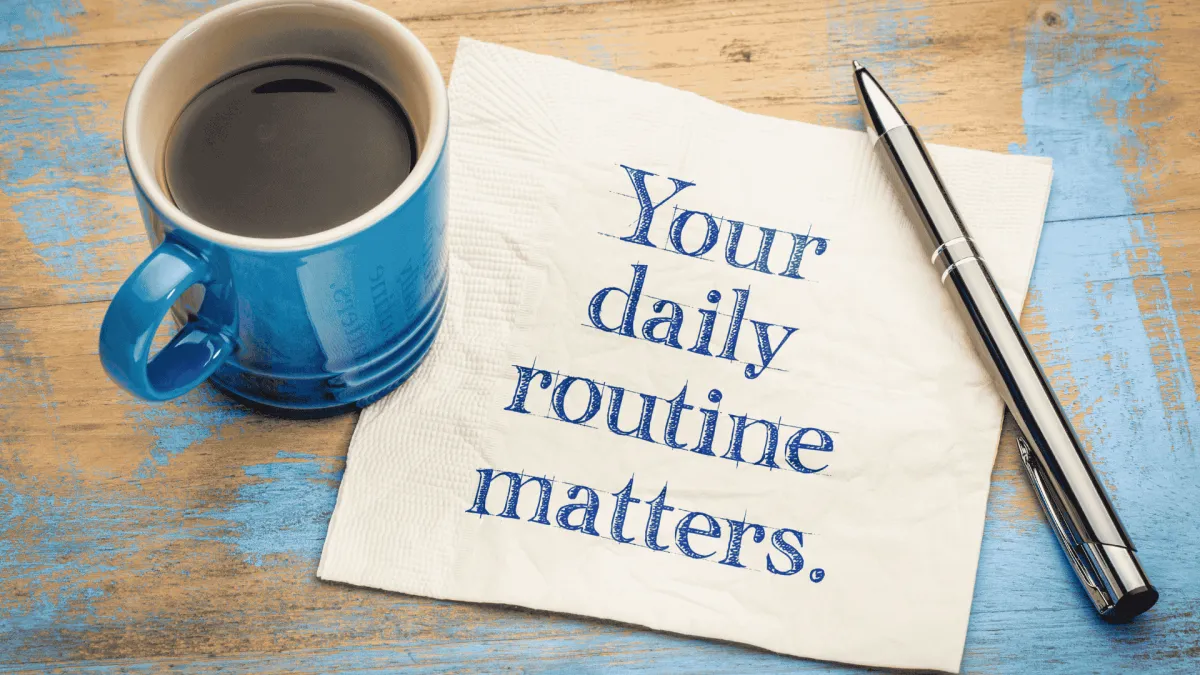
Daily Routines and Stress Relief: Why the Right Routine Can Improve Stress Resilience
Let’s be honest — when we hear the word routine, it can sound a bit… boring, right?
Like something rigid that makes life too predictable.
But the truth is, the right kind of routines do the opposite. They give you freedom. They help you breathe. They bring stability when life feels messy and create a sense of calm your body quietly craves.
A daily routine is simply a set of intentional habits you repeat regularly — from your morning walk to your bedtime ritual. It’s not about control but about creating rhythm and flow in your day.
And especially if, like me, you’re juggling work, family, and everything life brings — always scanning who’s jumping where, managing meeting notifications, reminders, and a never-ending list of things — routines help you anchor.

What Is the Purpose of a Routine?
Our brains and bodies love rhythm. Just like babies who thrive on predictable routines, adults benefit from structure too. Predictability tells your nervous system, “You’re safe.”
That’s powerful — because when your brain isn’t constantly on high alert, always scanning for danger and living in fight-or-flight mode, you suddenly have more energy, focus, and creativity for the things that truly matter.
With time, intentional routines can lower stress and anxiety, improve sleep and digestion, balance your hormones, reduce decision fatigue, and help you stay consistent in the long term.
In short, routines create space for you to stress less and live more.
Not All Routines Are Created Equal
Of course, not every routine supports your health.
You can have routines that drain you — like scrolling before bed, skipping breakfast, smoking, or reaching for a glass of wine every evening to unwind. These are still routines — just ones your brain has learned through repetition.
The good news? Neuroplasticity works both ways. The same process that created those less supportive habits can also help you build new, nourishing ones. Every time you repeat a small, positive action — preparing a healthy meal, taking a walk, breathing deeply before reacting — you strengthen new neural pathways and slowly shift your default settings toward balance and calm.
The Science Behind Daily Routines
Neuroscience shows that routines lower cortisol and calm the amygdala — the brain’s built-in alarm system. Each predictable, nurturing action — your morning yoga, your tea ritual, or your bedtime routine — sends a clear signal: You’re safe. You can relax.
Every decision you make — what to eat, what to wear, when to exercise — consumes glucose and activates your brain’s decision-making centers. By automating small, healthy choices, you free up mental energy for what truly matters — joy, creativity, and relationships.
Your body also thrives on rhythm. Regular meals, sleep, and movement keep your circadian rhythm in balance — your internal clock that regulates hormones, digestion, sleep, and mood. Consistency builds stability from the inside out.
And through repetition, these small patterns rewire your brain, making healthy habits more automatic over time — that’s the magic of neuroplasticity.
Daily Routines vs. Rigidity
A routine isn’t a strict schedule — it’s a compass that helps you find balance.
The goal isn’t to fill every minute of your day but to create gentle anchor points that help you feel grounded, even when life gets unpredictable.
That realization changed everything for me. I used to think routines were boring — now I see them as one of the most powerful tools for stress resilience and overall wellbeing.
Maybe it’s:
A short yoga session before the rest of the house wakes up
A quiet walk after lunch
Evening herbal tea and a few pages of reading before bed
These moments tell your body and mind: You’re safe. You’re cared for.

When to Stay Flexible
Routines are meant to support you, not control you. Life has seasons — and so do we. Some days everything flows; other days, it doesn’t — and that’s okay. What matters most is the intention, not perfection.
Think rhythm, not rules.
Listen to your body. Some mornings call for movement, others for rest.
The more you learn to move with your own rhythm, the easier it becomes to reduce stress, restore balance, and live with more ease.
Final Thoughts: Small Changes, Big Results
Start small. Repeat gently.
Because when your body feels safe, your mind can thrive — and that’s where the healing starts and real change begins.
Want to learn a simple morning routine that helps you start your day with calm instead of chaos?
Grab my free guide: Morning Reset for Busy Women.
Because how you start your day truly matters — it sets the tone for everything that follows.
